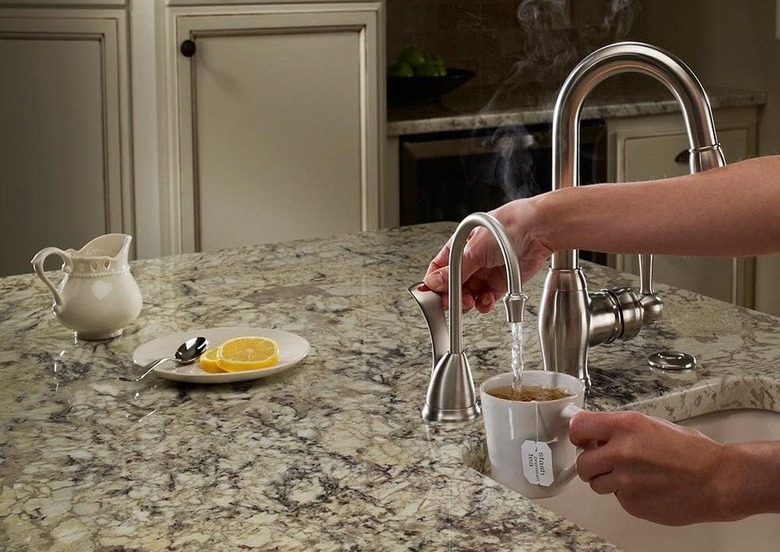How To Troubleshoot Instant Hot Water Dispensers
One of the great kitchen upgrades is an instant hot water dispenser. Unlike a water heater, it maintains near-boiling water that's ready anytime you need it for a quick cup of tea on a cold night. If you find your teatime interrupted by lack of hot water or low water flow coming from your dispenser, troubleshooting can be quick and easy.
Check the Power
Check the Power
The first thing to check when trying to diagnose issues with any electrical appliance is the power. The power cord should be fully inserted into the power outlet. Make sure there's power at the outlet by testing it for the required 115 volts with a voltmeter. If you find the appropriate amount of voltage is going to the tank, replacement might be the next step.
Water Too Hot or Not Hot Enough
Water Too Hot or Not Hot Enough
If the water temperature isn't what you'd like it to be, the thermostat may be the issue. Run 2 cups of water and test the water temperature with a thermometer rated for at least 210 degrees Fahrenheit. Adjust the thermostat on the tank and wait 10 minutes. Test the temperature again to see if your adjustment made any difference. If no hot water is present or your adjustment didn't make any difference, you could have an issue with the power source or the built-in thermostat.
The built-in thermostat can cause a few different issues. One is erratic or inconsistent temperatures, which may include water or steam spitting out of the faucet. Some spitting of steam may be normal upon initial start-up or after a large water draw. Another issue that may occur is irregular water flow, which can be caused by the temperature being set too high. If you suspect either of these, adjust the temperature with the thermostat, run 2 cups of water and wait 10 minutes. If you still notice the issue and you've checked the power input, replacement of the tank may be necessary.
Low, Irregular, or Nonexistent Water Flow
Low, Irregular, or Nonexistent Water Flow
Your problem may not be with the instant hot water dispenser at all. Make sure the whole house has at least 30 psi of water pressure. If your home's water pressure is correct, make sure the cold water supply valve to the tank is fully open and check that there are no kinks in any supply tubing. Also, check that the tubing to the faucet isn't longer than 16 inches.
Some systems may have been installed with a filter, and one can easily forget that it's even there. A plugged or nearly plugged filter can cause low or no water flow to the tank. These filters should be changed regularly based on usage. Most manufacturers recommend about every six months.
Many faucets have a built-in aerator. These also need to be cleaned or replaced on occasion. If you've recently had work done to your plumbing, this can sometimes disturb the build-up in your home's plumbing system, which can lodge debris in supply tubing or the aerator. Cleaning and flushing the aerator and supply tubing may be necessary. Refer to your owner's manual for recommendations on procedures for flushing or cleaning your hot water dispenser or consult a professional.
Water Under the Sink
Water Under the Sink
Water leaks are always the most concerning and can easily be overlooked for long periods. If you find water under your sink, look at all the plumbing connections to the tank, filter, faucet, and drain. If you find a leak, make any necessary plumbing fixes to correct the problem.
